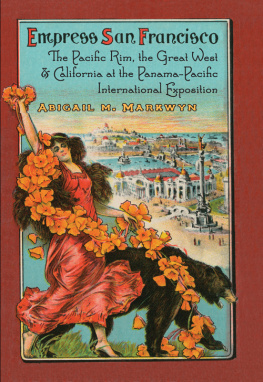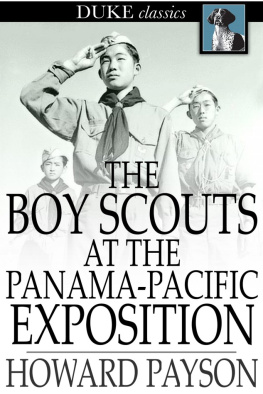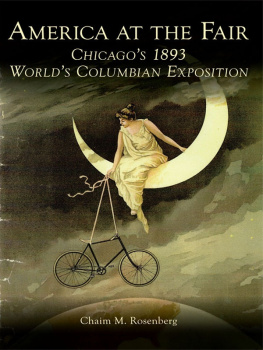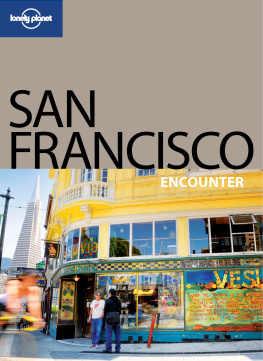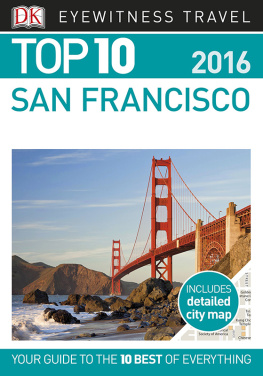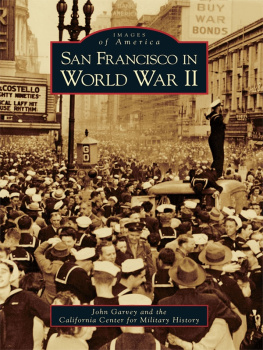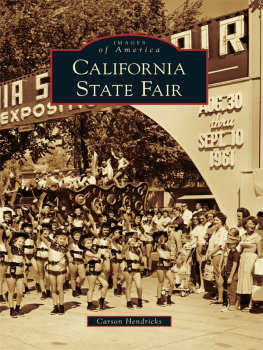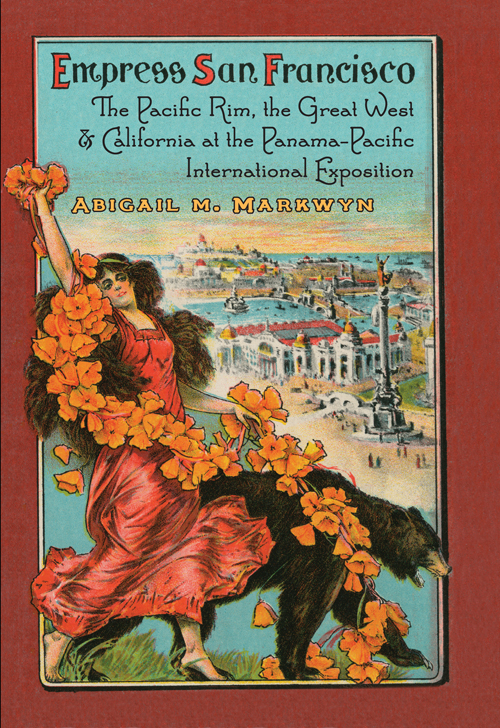
San Franciscos Panama-Pacific International Exposition of 1915 was a signal event for imagining the Pacific Rim in the early years of the twentieth century. Markwyns wonderful book makes clear that the fair was also a defining moment for the political culture of San Francisco. Hers is a finely crafted analysis and a well-told story of a city-state in the making.
Robert Rydell, author of All the Worlds a Fair and World of Fairs
By taking a new look at the Panama-Pacific International Exposition of 1915, Abigail Markwyn provides an important addition to the existing literature on worlds fairs in the late nineteenth and early twentieth centuries. Her major contribution is to explore the ways in which San Franciscos ethnic, class, and gender groups developed their own counternarratives and, sometimes just by their presence, posed a challenge to the dominant views.
Robert W. Cherny, author of American Politics in the Gilded Age, 18681900
Empress San Francisco

Empress San Francisco
The Pacific Rim, the Great West, and California at the Panama-Pacific International Exposition
Abigail M. Markwyn

University of Nebraska Press | Lincoln and London
2014 by the Board of Regents of the University of Nebraska
Part of chapters 1 and 7 originally appeared in Gendering the Fair: Histories of Women and Gender at Worlds Fairs edited by Tracey Jean Boisseau and Abigail Markwyn. Copyright 2010 by the Board of Trustees of the University of Illinois. Used with permission of the University of Illinois Press. Part of chapter 4 originally appeared in Economic Partner and Exotic Other: China and Japan at San Franciscos Panama-Pacific International Exposition, Western Historical Quarterly 39 (Winter 2008): 43965. Copyright by Western History Association. Reprinted by permission. All rights reserved.
Cover image California Welcomes the World, Donald G. Larson Collection on International Expositions and Fairs, Henry Madden Library, exp915a.655pc
Publication of this volume was assisted by The Virginia Faulkner Fund, established in memory of Virginia Faulkner, editor in chief of the University of Nebraska Press.
Library of Congress Cataloging-in-Publication Data
Markwyn, Abigail M.
Empress San Francisco: the Pacific Rim, the Great West, and California at the Panama-Pacific International Exposition / Abigail M. Markwyn.
pages cm
Includes bibliographical references and index.
ISBN 978-0-8032-4384-2 (hardcover: alk. paper) ISBN 978-0-8032-6781-7 (pdf) ISBN 978-0-8032-6782-4 (epub) ISBN 978-0-8032-6783-1 (mobi) 1. Panama-Pacific International Exposition (1915 : San Francisco, Calif.) 2. Group identityCaliforniaSan FranciscoHistory20th century. 3. San Francisco (Calif.)Ethnic relations. 4. Chinese AmericansCaliforniaSan FranciscoEthnic identity. 5. Japanese AmericansCaliforniaSan FranciscoEthnic identity. 6. WomenCaliforniaSan FranciscoSocial conditions. 7. San Francisco (Calif.)Moral conditions. 8. San Francisco Bay Area (Calif.)Social life and customs. I. Title. II. Title: Pacific Rim, the Great West, and California at the Panama-Pacific International Exposition.
TC 781. B 1 M 37 2014
907.4'79461dc23
2014008053
The publisher does not have any control over and does not assume any responsibility for author or third-party websites or their content.
For my family
Contents
Plates
Like many first books, Empress San Francisco began many years ago as my dissertation. And like my children, it has grown and developed in sometimes unexpected ways. What has remained constant are the many debts I have accrued along the way. My training in history began at Carleton College, where Robert Bonner introduced me to the formal study of the history of the American West and Kirk Jeffrey guided me through the senior thesis project that convinced me that this could be my career. At the University of Wisconsin ( UW )Madison, I encountered a host of excellent scholars and teachers who taught me how to do the work I do today. The guidance of Bill Cronon, the late Jeanne Boydston, Susan Lee Johnson, and the ever-patient Nan Enstad helped bring my dissertation to fruition. I am particularly grateful to Nan for her support of my personal and professional choices throughout the dissertation process. Camille Guerin-Gonzales provided an important outside perspective. Many other excellent scholars and teachers at Madison, including Judith Walzer Leavitt, Florencia Mallon, Francisco Scarano, Steve Stern, and Steven Kantrowitz, helped me grow as a scholar.
Other scholars provided assistance throughout this project. The ever-generous Robert Rydell offered support and advice and even helped me find an editor. His generosity toward younger scholars is a model for all. T. J. Boisseau and I met at a conference and immediately found common ground in our interest in women and fairs. The result was our coedited volume and a friendship and mentorship that has sustained me through this project. Alan Bain, Judy Yung, Yong Chen, and Janet Davis all provided answers and helped me locate resources for the project. Sarah Moore, Andrea Radke-Moss, and many other fellow worlds fair scholars have provided valuable feedback on conference papers. Thanks to Lauren Rabinovitz and my fellow junior faculty fellows at the 2008 University of Iowa Workshop on Women of Color in Popular Culture for offering excellent comments on my work in progress. Amanda Cannata, Robert Chase, and Jamaica Hutchins pointed me to essential primary sources at critical junctures. Ben Rosenberg and Winifred Chang provided translation assistance. Colleagues at Carroll University, including Lilly Goren, Scott Hendrix, Jim Grimshaw, Lori Kelly, and Charlie Byler, have listened to me discuss this project ad infinitum and offered helpful feedback and friendship. At the University of Nebraska Press, Matthew Bokovoy has proved himself an extraordinary editor. His practical assistance and close editing eye have made this project an immensely better book. The staff at the press have been terrific help as well, and I thank them for their efforts during the publication process. Thanks also to Gray Brechin, Bob Rydell, and two anonymous readers for the University of Nebraska Press for providing insightful feedback on my earlier draft. Nonetheless, all errors remain my own.
Archivists around the Bay Area helped me locate sources for this project about the Panama-Pacific International Exposition ( PPIE ), and to them I am extremely grateful. From the moment I began this research at the Bancroft Library David Kessler was friendly, helpful, and enthusiastic. The staff there was unfailingly helpful. I owe particular thanks to Susan Snyder for helping me locate and gain permissions for a number of the images in this book. The staff at the San Francisco Public Library ( SFPL ), the California Historical Society, the Mechanics Institute Library, and the California State Library provided assistance as well. Carrie Musick of the San Francisco Young Womans Christian Association allowed me to paw through musty boxes of files, as did the staff at the African American Museum and Library of Oakland. Christina Moretta and Susan Goldstein at SFPL helped me acquire images and permissions. Tammy Lau and Adam Wallace at the California State UniversityFresno Library supplied a last-minute windfall of images for which I am very thankful. Nathan Kerr and Suzanne Fischer helped me locate ephemera and images from the Oakland Museum of California. At the Smithsonian Institution, Maria Eipert provided generous assistance in gaining access to previously unpublished color photographs of the fair. Chuck Petterson, collector of PPIE memorabilia, graciously allowed me the use of some of his images as well. The interlibrary loan staff at UW -Madison and Carroll University made this research possible.
Next page
